
Fulvio BianconiA fasce e a canne, 1951–1956

Fulvio BianconiA fasce e a canneVenini & C., 1951–1956
Four bottles. Two, (first and third) with horizontal fasce: the first in yellow transparent glass with an opaque aubergine fascia, the third in transparent grey with a yellow opaquefascia. The other two (second and fourth) are made with vertical canes: the second in transparent blue and green canes, the fourth in opaque yellow and transparent blue canes with a matching stopper.
Acid stamped:
venini murano ITALIA.
12 in. high (30 cm)
15 in. high (38 cm)
12 in. high (30 cm)
18 in. high (45 cm)
Bibliography and comparative texts:
R. Linzeler, 1922, p. 666;
C. Carrà, 1923, p. 67;
R. Linzeler, 1923, p. 83;
R. Papini, 1930, n. 570;
G. Mariacher, 1967, p. 98;
R. Barovier Mentasti, 1982, n. 252;
Mille anni…, 1982, n. 503;
F. Deboni, 1984, p. n. 70;
W. Neuwirth, 1987, nn. 7, 104;
A. Dorigato, 1986, p. 71;
F. Deboni, 1989, n. 1;
L’arte del vetro, 1982, n. 307;
M. Heiremans, 1993, n. 191;
M. Barovier, R. Barovier Mentasti,
A. Dorigato, 1995, n. 15;
A. Venini Diaz de Santillana, 1996, n. 1;
R. Barovier Mentasti, 1998, n. 25;
A. Venini Diaz de Santillana, 2000, n. 1;
Olnick Spanu, 2000, n. 8;
Olnick Spanu, 2001, n. 13.
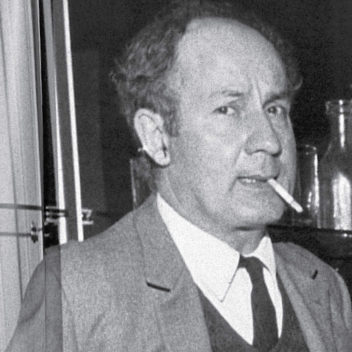
Fulvio Bianconi 1915–1996
Fulvio Bianconi was a graphic artist, caricaturist, and designer. Born in Padua, he attended the Istituto d'Arte and the Accademia di Belle Arti in Venice. He first encountered glass at age fifteen when he studied decoration with enamels under the guidance of Michele Pinto. During the late '30s, he worked as a caricaturist, graphic artist, and illustrator for various publishing houses such as Mondadori, Rizzoli, Garzanti, and others. After World War II, he came to Murano to study glass techniques and met Paolo Venini. A productive relationship ensued as he began a collaboration with Venini in 1947 that lasted through the entire decade of the '50s. One of his most characteristic works is the long series of stylized figurines which Bianconi designed at the end of the '40s, taking his inspiration from the Italian Commedia dell'Arte. His pezzati vessels proved extraordinary due to their richness in color, as were the fazzoletti, presented in several different vitreous textures, which he created with Venini himself. He obtained widespread acclaim for the a Macchie and Fasce orrizontali series, in which Bianconi revealed a marked painterly vocation. In the '50s, he worked with other workshops such as the Vetreria Cenedese, designing vessels with applications and other pieces with cased decorations. From 1958 to 1961, he designed glass pieces for I.V.R. Mazzega. In 1963, he designed for the Vetreria Vistosi. And in 1967, he began working again with Venini, creating vessels with unusual shapes such as the Informale (1968). After another contact with Venini in 1989, he designed for De Majo from 1991 to 1992.

Venini & C. 1932–2001
In 1932, when both Martinuzzi and Zecchin left the company, Paolo Venini changed the name from Vetri Soffiati Muranesi Venini & Co. (V.S.M. Venini & Co.) to Venini & C.. Milanese architect Tommaso Buzzi became the new artistic director. After 1934, artistic direction was taken on by Carlo Scarpa, who designed most of the company's production through 1947. Side by side with Venini, who often intervened personally in design, Scarpa created numerous collections of objects characterized by refined colors. After World War II, Venini & C. sought numerous collaborations with artists such as architect Giò Ponti and the Swedish-born Tyra Lundgren. After 1948, Fulvio Bianconi, Massimo Vignelli, and Tobia Scarpa contributed significantly to the new direction of the company. Paolo Venini died in 1959 and his son-in-law, Ludovico Diaz de Santillana, took over the management of Venini & C. He not only worked personally as a glass designer but also continued the collaboration started by Paolo Venini with various artists and designers. Starting in 1960, many other designers collaborated with the company, like Thomas Stearns, Toni Zuccheri, Tapio Wirkkala, Laura and Alessandro Diaz de Santillana, James Carpenter, Dan Dailey, Richard Marquis, Benjamin Moore, and Toots Zynsky. In 1986, the de Santillana family left the company, selling their stock to the Ferruzzi group, which guaranteed the fine quality Venini was known for by hiring new designers such as Timo Sarpaneva, Marco Zanini, Ettore Sottsass Jr., Alessandro Mendini, Mario Bellini, Barbara del Vicario, and others. In 1988, Venini was acquired by Royal Scandinavian. Since 2001, Venini S.p.A. has been part of Italian Luxury Industries Group and is led by Giancarlo Chimento, Giuliano Tabacchi, and Giorgio Rizzo.
Fulvio BianconiA fasce e a canne, 1951–1956
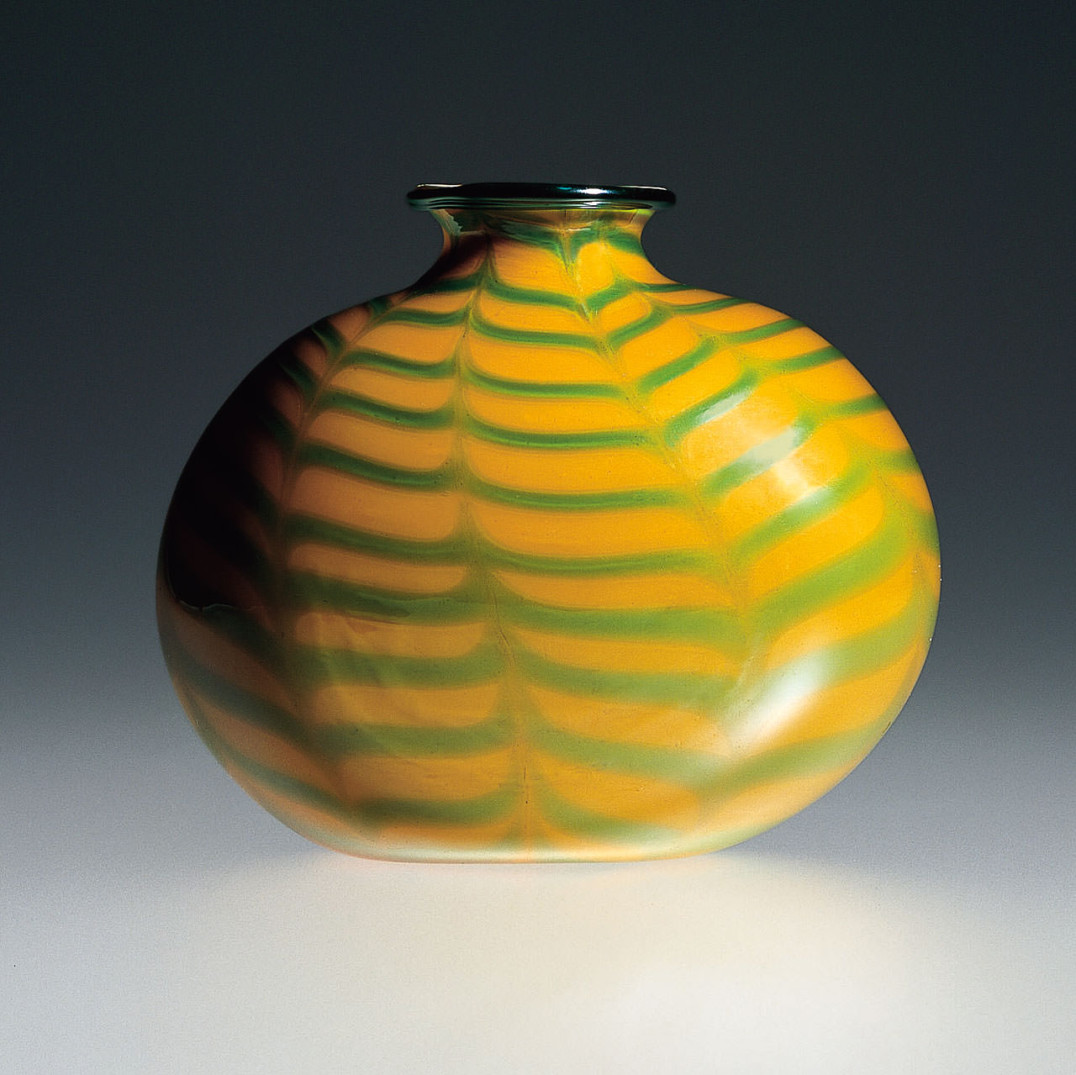
Carlo ScarpaFenicio, 1930-1931

Carlo ScarpaFenicioMaestri Vetrai Muranesi Cappellin & C., 1930-1931
Lattimo vase cased in transparent straw-colored glass with blue
decoro fenicio.
Acid stamped: M.V.M. Cappellin Murano.
6 1/2 in. high (16.5 cm)
Exhibitions:
1964, Venice, 32nd Biennale Internazionale d’Arte, Exhibition of
the Decorative Arts of the Venetian Territory;
2000, New York, Venetian Glass, Museum of Arts & Design;
2001, Milan, Murano: Vetri dalla Collezione Olnick Spanu, Spazio Oberdan.
Bibliography and comparative texts:
Domus, 1930, January, p. 38;
M. Barovier, 1991, nn. 3, 4;
R. Barovier Mentasti, 1992, n. 62;
L’arte del vetro…, 1992, p. 243;
H. Newman, 1993, p. 145;
Glas Band II, 1995, p. 232;
M. Heiremans, 1996, n. 32;
F. Deboni, 1996, n. 66;
M. Barovier, 1997, p. 195;
M. Barovier, 1998 (b), pp. 8, 9;
Olnick Spanu, 2000, n. 24;
Olnick Spanu, 2001, n. 38.
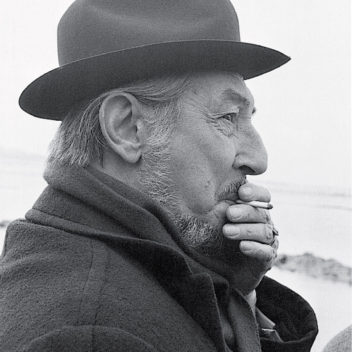
Carlo Scarpa 1906–1978
Born in Venice, Carlo Scarpa graduated from the Accademia di Belle Arti in Venice in 1926. Soon after his graduation he began work at M.V.M. Cappellin, where he soon replaced Vittorio Zecchin as artistic director. Following the direction laid down by Zecchin, he initially created transparent blown-glass pieces with essential forms, in particular the pieces exemplified by their conic base. Scarpa later designed light glass pieces in brightly colored pasta vitrea, or decorated fenici. Deservedly famous was the refined collection of lattimi decorated with gold or silver leaf, which he presented for the first time in Monza in 1930 together with the canne verticali and millefiori glass works. Giacomo Cappellin closed the workshop in 1932 for bankruptcy, putting an end to the collaboration with Carlo Scarpa. In 1934, Scarpa became the artistic director of Venini & C., where he continued to work through 1947. Alongside Paolo Venini, who often participated in the design of glass, Carlo Scarpa experimented with the vast potential of glass, using and innovating many traditional techniques, by which he created extraordinary modern pieces. After the mezza filigrana glass works came the sommersi, the pasta vitrea inspired by Chinese ceramic motifs, the corrosi, the battuti, the vessels a fasce colorate, a pennellate, the variegati, and the famous multicolored murrine with the surfaces finished at the carving wheel. After World War II, Carlo Scarpa worked almost exclusively as an architect and teacher.
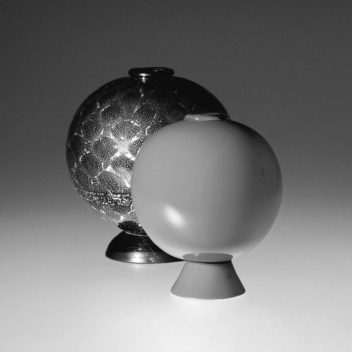
Maestri Vetrai Muranesi Cappellin & C. 1925–1932
M.V.M. Cappellin & C. was founded in 1925 by Giacomo Cappellin after the closing of Cappellin Venini & C. Vittorio Zecchin, a painter from Murano who had worked for Cappellin Venini, continued his collaboration with Cappellin for a short time, designing soffiati, blown glass pieces characterized by delicate colors and pure lines. At the end of 1926, following Zecchin's departure, the young Carlo Scarpa took over the artistic direction of the company. Initially, he proceeded along the course taken by his predecessor, creating lightweight blown pieces with simple geometric forms. These were followed by many collections of refined elegance characterized by various transparent textures and often distinguished by vivid colors. Despite the remarkable success at the 1930 Biennale di Monza, M.V.M. Cappellin & C. was forced to close in January 1932. This was most likely the result of inefficient financial management.
Carlo ScarpaFenicio, 1930-1931
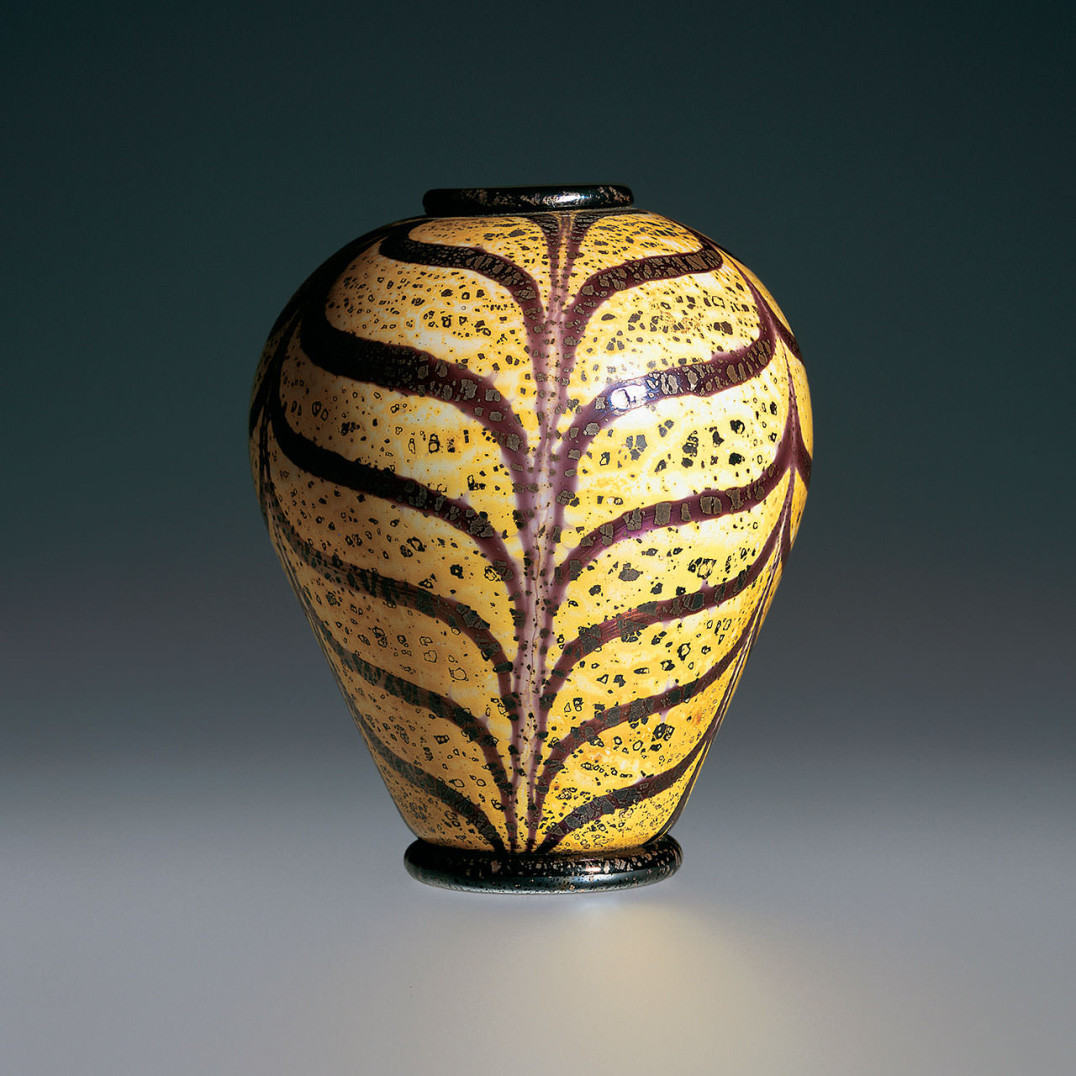
Carlo ScarpaFenicio, 1928-1929

Carlo ScarpaFenicioMaestri Vetrai Muranesi Cappellin & C., 1928-1929
Vase in lattimo glass with fenicio decoration in amethyst glass, and applications of gold leaf.
6 1/2 in. high (16.5 cm)
Exhibitions:
2001, Milan, Murano: Vetri dalla Collezione Olnick Spanu, Spazio Oberdan.
Bibliography and comparative texts:
Domus, 1930, January, p. 38;
M. Barovier, 1991, nn. 3, 4;
R. Barovier Mentasti, 1992, n. 62;
L’arte del vetro…, 1992, p. 243;
H. Newman, 1993, p. 145;
Glas Band II, 1995, p. 232;
M. Heiremans, 1996, n. 32;
F. Deboni, 1996, n. 66;
M. Barovier, 1997, p. 195;
M. Barovier, 1998, pp. 8, 9;
Olnick Spanu, 2001, n. 39.

Carlo Scarpa 1906–1978
Born in Venice, Carlo Scarpa graduated from the Accademia di Belle Arti in Venice in 1926. Soon after his graduation he began work at M.V.M. Cappellin, where he soon replaced Vittorio Zecchin as artistic director. Following the direction laid down by Zecchin, he initially created transparent blown-glass pieces with essential forms, in particular the pieces exemplified by their conic base. Scarpa later designed light glass pieces in brightly colored pasta vitrea, or decorated fenici. Deservedly famous was the refined collection of lattimi decorated with gold or silver leaf, which he presented for the first time in Monza in 1930 together with the canne verticali and millefiori glass works. Giacomo Cappellin closed the workshop in 1932 for bankruptcy, putting an end to the collaboration with Carlo Scarpa. In 1934, Scarpa became the artistic director of Venini & C., where he continued to work through 1947. Alongside Paolo Venini, who often participated in the design of glass, Carlo Scarpa experimented with the vast potential of glass, using and innovating many traditional techniques, by which he created extraordinary modern pieces. After the mezza filigrana glass works came the sommersi, the pasta vitrea inspired by Chinese ceramic motifs, the corrosi, the battuti, the vessels a fasce colorate, a pennellate, the variegati, and the famous multicolored murrine with the surfaces finished at the carving wheel. After World War II, Carlo Scarpa worked almost exclusively as an architect and teacher.

Maestri Vetrai Muranesi Cappellin & C. 1925–1932
M.V.M. Cappellin & C. was founded in 1925 by Giacomo Cappellin after the closing of Cappellin Venini & C. Vittorio Zecchin, a painter from Murano who had worked for Cappellin Venini, continued his collaboration with Cappellin for a short time, designing soffiati, blown glass pieces characterized by delicate colors and pure lines. At the end of 1926, following Zecchin's departure, the young Carlo Scarpa took over the artistic direction of the company. Initially, he proceeded along the course taken by his predecessor, creating lightweight blown pieces with simple geometric forms. These were followed by many collections of refined elegance characterized by various transparent textures and often distinguished by vivid colors. Despite the remarkable success at the 1930 Biennale di Monza, M.V.M. Cappellin & C. was forced to close in January 1932. This was most likely the result of inefficient financial management.
Carlo ScarpaFenicio, 1928-1929
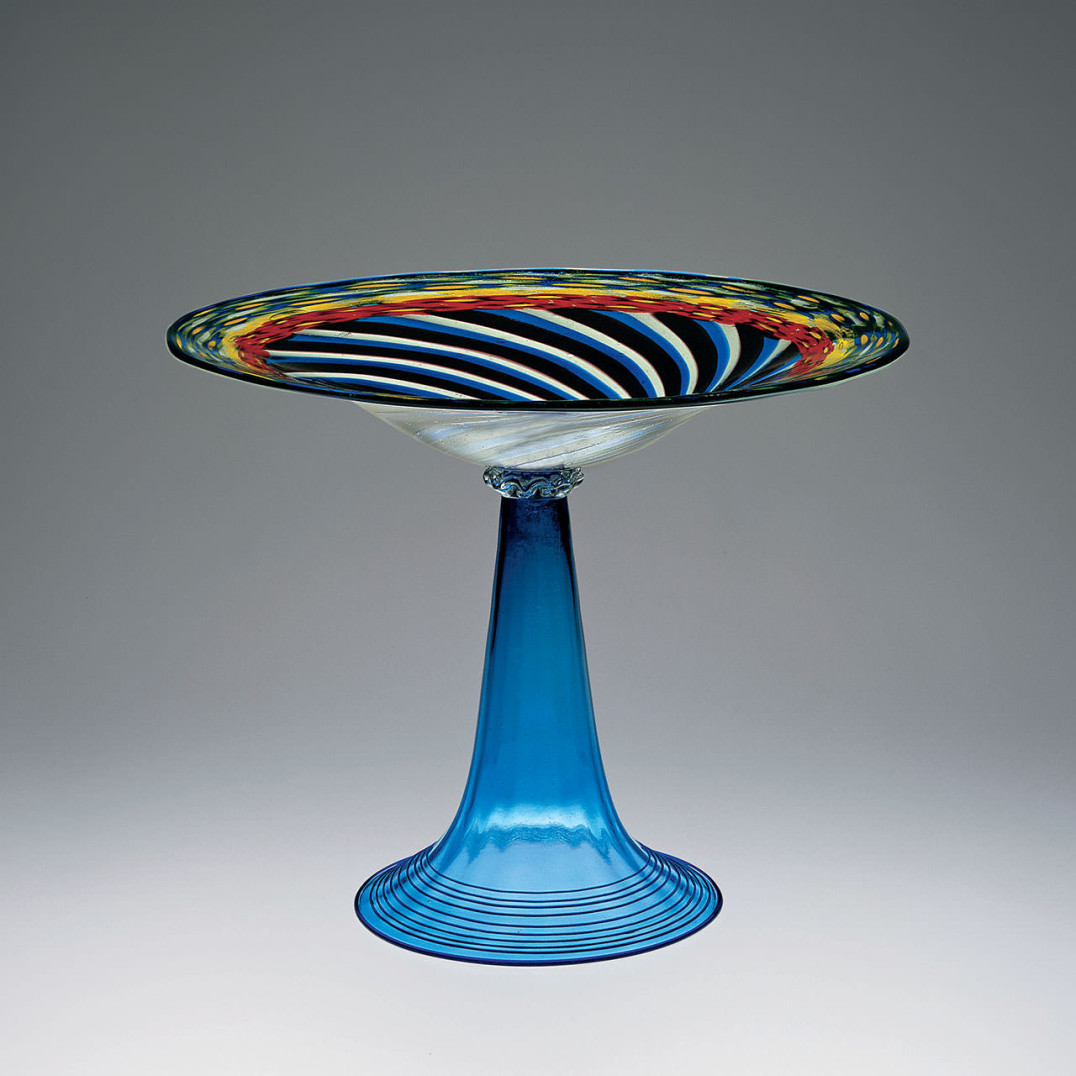
Artisti BarovierA murrine, ca. 1914
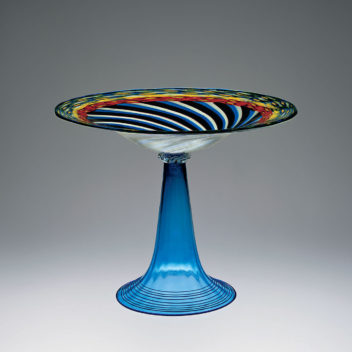
A murrineArtisti Barovier, ca. 1914
Footed bowl crafted from multicolored glass canes and murrine. Tall ribbed foot in blue trasparente glass. This vessel is part of a limited series of one-of-a-kind pieces made by Artisti Barovier for Salviati.
Acid stamped: Salviati Murano.
11 3/8 in. high (29 cm)
Exhibitions:
2001, Milan, Murano: Vetri dalla Collezione Olnick Spanu,
Spazio Oberdan.
Bibliography and comparative texts:
Antonio Salviati…, 1982, n. 77;
Vetro di Murano…, 1982, n. 99; Mostra del vetro…, 1984, n. 107;
C. Cerutti, 1985, p. 61;
I. De Guttry, M.P. Maino,
M. Quesada, 1985, n. 7;
Gli anni di…, 1987, nn. 19, 36;
M. Barovier, 1993, nn. 35-42;
M. Heiremans, 1993, nn. 30, 31;
M. Barovier, 1994, n. 2;
F. Deboni, 1996, n. 21;
M. Barovier, 2001, p. 277
Olnick Spanu, 2001, n. 2.
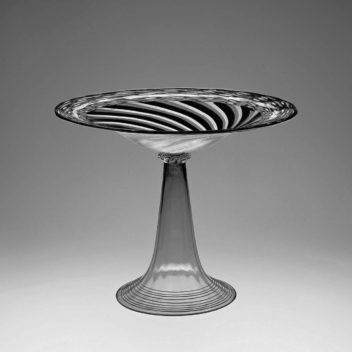
Artisti Barovier 1890–1919
Giovanni Barovier and his nephews Giuseppe, Benvenuto, and Benedetto worked as glassblowers at the Salviati dott. Antonio furnace, founded in 1877. In 1884, after Salviati's departure, they acquired ownership of the company. On the basis of an agreement signed with Salviati, the company maintained its original name until Salviati's death in 1890. It then changed its name to Artisti Barovier. Under the guidance of Benvenuto and Giuseppe, the company reproduced the classical themes of nineteenth-century glass and soon achieved fame for the refinement of its production. Works executed later, particularly a murrine, were inspired by floral themes. The Artisti Barovier took several of these pieces to different exhibitions, including the Cà Pesaro (1908, 1909, 1913), where pieces designed by Zecchin and Wolf-Ferrari were also shown. During World War I, the furnace was temporarily moved to Livorno in Tuscany. In 1919, the company name was changed to Vetreria Artistica Barovier and several new partners were added. Among them were Ercole Barovier and Nicolò Barovier, Benvenuto Barovier's sons, and Giuseppe Barovier's son Napoleone.
Artisti BarovierA murrine, ca. 1914

Carlo ScarpaPasta vitrea; Fenicio, 1928-1931
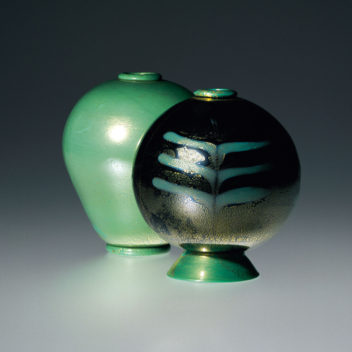
Carlo ScarpaPasta vitrea; FenicioMaestri Vetrai Muranesi Cappellin & C., 1928-1931
Green pasta vitrea vase.
Black pasta vitrea globular vase with a green fenicio decoration on a conic foot. Both vases decorated with gold leaf applications.
Both acid stamped: M.V.M. Cappellin Murano.
6 1/2 in. high (16.5 cm)
6 1/4 in. high (15.9 cm)
Exhibitions:
1964, Venice, 32nd Biennale Internazionale d’Arte, Exhibition of
the Decorative Arts of the Venetian Territory;
2000, New York, Venetian Glass, Museum of Arts & Design;
2001, Milan, Murano: Vetri dalla Collezione Olnick Spanu, Spazio Oberdan.
Bibliography and comparative texts:
M.V.M. Catalogue, n. 5911;
Domus, 1930, January p. 38;
Mostra di vetri…, 1931, pp. 22, 23;
Venezianisches Glas…, 1981, p. 64;
Murano Glass…, 1982, n. 122;
Mostra del vetro…, 1984, p. 83;
M. Karasik, 1989, n. 4;
M. Barovier, 1991, nn. 1, 2;
M. Barovier, 1997, p. 194;
M. Barovier, 1998(b), pp. 7, 8, 9;
M. Barovier, 1999, p. 141;
Olnick Spanu, 2000, n. 25;
Olnick Spanu, 2001, n. 40;

Carlo Scarpa 1906–1978
Born in Venice, Carlo Scarpa graduated from the Accademia di Belle Arti in Venice in 1926. Soon after his graduation he began work at M.V.M. Cappellin, where he soon replaced Vittorio Zecchin as artistic director. Following the direction laid down by Zecchin, he initially created transparent blown-glass pieces with essential forms, in particular the pieces exemplified by their conic base. Scarpa later designed light glass pieces in brightly colored pasta vitrea, or decorated fenici. Deservedly famous was the refined collection of lattimi decorated with gold or silver leaf, which he presented for the first time in Monza in 1930 together with the canne verticali and millefiori glass works. Giacomo Cappellin closed the workshop in 1932 for bankruptcy, putting an end to the collaboration with Carlo Scarpa. In 1934, Scarpa became the artistic director of Venini & C., where he continued to work through 1947. Alongside Paolo Venini, who often participated in the design of glass, Carlo Scarpa experimented with the vast potential of glass, using and innovating many traditional techniques, by which he created extraordinary modern pieces. After the mezza filigrana glass works came the sommersi, the pasta vitrea inspired by Chinese ceramic motifs, the corrosi, the battuti, the vessels a fasce colorate, a pennellate, the variegati, and the famous multicolored murrine with the surfaces finished at the carving wheel. After World War II, Carlo Scarpa worked almost exclusively as an architect and teacher.

Maestri Vetrai Muranesi Cappellin & C. 1925–1932
M.V.M. Cappellin & C. was founded in 1925 by Giacomo Cappellin after the closing of Cappellin Venini & C. Vittorio Zecchin, a painter from Murano who had worked for Cappellin Venini, continued his collaboration with Cappellin for a short time, designing soffiati, blown glass pieces characterized by delicate colors and pure lines. At the end of 1926, following Zecchin's departure, the young Carlo Scarpa took over the artistic direction of the company. Initially, he proceeded along the course taken by his predecessor, creating lightweight blown pieces with simple geometric forms. These were followed by many collections of refined elegance characterized by various transparent textures and often distinguished by vivid colors. Despite the remarkable success at the 1930 Biennale di Monza, M.V.M. Cappellin & C. was forced to close in January 1932. This was most likely the result of inefficient financial management.